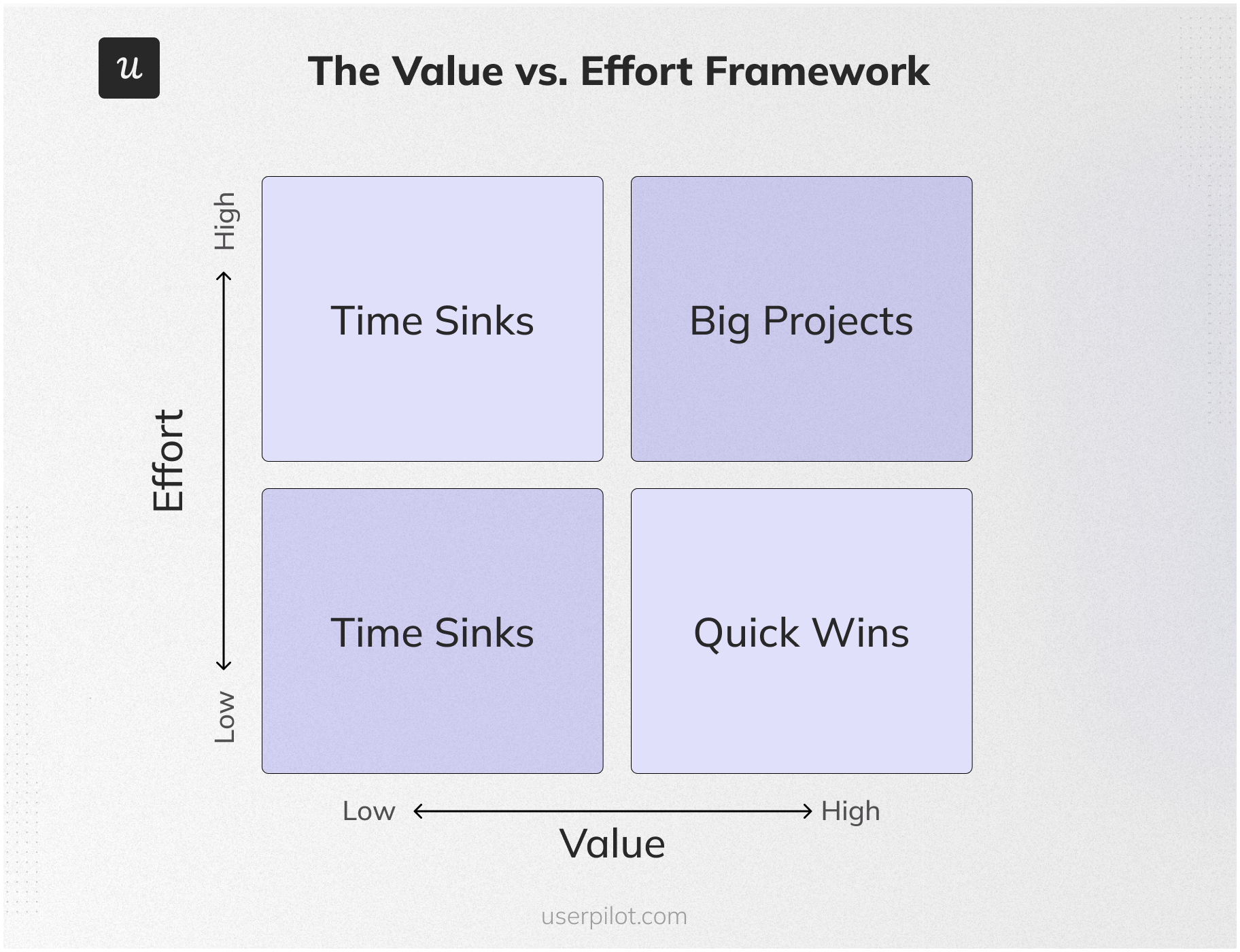
What is the Level of Effort? Why is it important for project managers to track? And how relevant is it to product management?
These are just a few of the questions we tackle in this article. We also share tips on how to collect in-app feedback and calculate it accurately and effortlessly.
Let’s dive in!
Get The Insights!
The fastest way to learn about Product Growth, Management & Trends.
What is the level of effort?
Level of Effort (LOE) is a project management term that can mean two different things.
Many project professionals define LOE as the total amount of work, time, or resources necessary to deliver the project’s deliverables. It’s normally measured in hours, story points, or monetary units.
The other definition of the concept is narrower. It includes all the support activities involved in project delivery but not the discrete effort or, in other words, the primary tasks necessary to produce the deliverables.
So if the project aims to build software, LOE wouldn’t include the discovery, design, and development. Instead, it would be activities like project budget accounting or making phone calls. They’re essential for project success but don’t directly involve building the product.
In this article, I’m going to use the term in the wider sense. The only exception is the section with examples of level-of-effort activities. However, most of the conclusions and practical advice apply regardless of how you interpret LOE.
Why should project managers measure the level of effort?
There are a number of reasons why tracking the Level of Effort is an essential part of successful project management.
First of all, by estimating how much the project is going to cost, project managers are able to better allocate resources to ensure the project is completed within the budget.
Secondly, estimating how long the project will take allows project managers to create accurate schedules.
This is essential for setting realistic stakeholder expectations and increases their trust in the manager’s skills. Accurate LOE estimates are also important for the morale of the development team members as they reduce the risk of unmanageable workloads or deadlines.
LOE is also a key part of risk management. By assessing the time and resources needed to complete project tasks, project managers can budget for contingencies and develop adequate mitigation strategies.
Finally, estimating LOE enables organizations to track project performance.
Product managers in SaaS organizations can also benefit from measuring the level of effort, for example, for planning sprints. It can also be useful for backlog item prioritization.
What are some examples of level-of-effort activities?
In the narrower sense, the LOE is made up of all the support activities that are key for successful product delivery.
Some level-of-effort examples include:
- Project administration
- Stakeholder management
- Customer liaison
- Creating thorough documentation
- Writing progress reports
- Scheduling meetings
- Creating customer surveys and analyzing the feedback.
When should a project manager assess the level of effort?
Project managers need to calculate the LOE constantly throughout the project lifecycle.
Let me explain.
During the early stages, calculating the LOE is important to determine if the project is feasible and the business case is sound. If that’s the case, the project manager needs the estimate for budgeting and scheduling purposes.
However, calculating the level of effort isn’t limited to the planning phase.
That’s because the data that is available early on isn’t usually sufficient to make accurate estimates. For this reason, project managers need to recalculate the LOE as the project progresses and more information becomes available.
For example, taking into account delays in the previous stages allows them to make more accurate calculations for future phases.
How to calculate the level of effort?
There are different ways to approach the process of calculating the level of effort. For the sake of simplicity, let’s break it down into 3 steps.
1. Determine how precise the effort estimations need to be
Project estimating, scheduling, and budgeting all require effort – the more accurate you want them to be, the more effort they require, which increases the total effort for the entire project.
To avoid incurring unnecessary costs and delays, decide how precise your estimate needs to be. When planning the budget for the project, you will be dealing with fairly wide brackets.
However, when hiring a contractor to complete a specific task, you want the estimate to be pretty accurate.
Also, bear in mind what we discussed in the previous section: don’t insist on obtaining accurate estimates when there’s not enough data.
2. Use a level of effort estimation technique
There are a few techniques you can use to estimate the level of effort:
- Delphi Technique – experts make independent estimates first and then discuss them to reach a consensus – suitable for all stages of the project.
- Analogous – based on the level of effort of similar projects, taking into account changes that have happened since their completion, like additional regulation or price increases – often used during the planning stage for general estimates.
- Analytical/Buttom-up – the estimates are done by the people who will perform each task and then the total is calculated.
- Relative – used in Agile frameworks to estimate the story points by comparing the effort of all tasks to one another.
3. Assign values to your level of effort scale
Based on the outcomes of the estimation exercises, you next assign the effort value to each task.
This is normally on a scale of 1 to 10. These are the values that you will use to calculate the overall level of effort for the project.
Tips for calculating the level of effort seamlessly
Let’s wrap it up with a few tips on how to calculate the level of effort for your project more accurately and… effortlessly.
1. Include additional time for the LOE activities in the project schedule
Experienced project managers know that they will get their estimates wrong, especially the initial ones. That’s why they always include contingency time and money in their plans.
Pro hack 1: Allocate the contingency resources for the whole project and not individual tasks. Not all tasks are going to run behind the schedule or over the budget. Some may finish earlier or cost less.
Pro hack 2: Don’t reveal how much contingency you’ve planned to the stakeholders or the project team. If they know the truth, the stakeholders will want it reduced, and the developers or contractors will use all the time and money available.
2. Use project management software to help calculate LOE
Modern project management tools allow project managers to make estimates and calculate and track the level of effort automatically.
In tools like Asana or Jira, you can manually assign the effort values in story points or time to each task, and they will calculate the overall level of effort. They also allow you to create visualizations, like the burndown chart, to keep track of progress.
MS Project, on the other hand, has robust earned value management features that allow you to track project performance using statistical data.

3. Keep accurate records of the level of effort
Keeping accurate records of the actual level of effort as the project progresses will allow you to make better-informed decisions in the future.
For example, an accurate budget report will allow you to estimate future costs more accurately.
Conclusion
Estimating and tracking the level of effort enables project managers to plan and allocate resources better. However, every project has too many unknowns to allow its accurate estimation, so project managers should allow for possible delays and higher costs in their plans.
Userpilot is a product adoption platform that helps teams reduce the level of effort for your SaaS product initiatives by streamlining feedback collection and product usage analysis. Book the demo to find out more!








